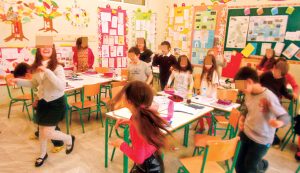As a parent, you can help your child create a great science fair project. A great way to begin is to take notes during brainstorming sessions. Then, you can start to research problems to solve. Once you have a general idea of what you’d like to present, you can develop a hypothesis. A good science project idea is one that addresses a real problem in the world. Then, you can test that hypothesis to prove or disprove it.
Engaging and Educational

Depending on the age of your child, a kid-friendly science project can be as simple as a floating egg experiment. This project can help students learn about the density of water and the different types of clouds. Another great project idea involves determining how light bends in different conditions. In addition, it can be helpful to study how different types of food affect the growth of plants. Another project that can be a good fit for older elementary school students is a ripening fruit experiment.
There are many other ideas for projects involving the properties of water. An experiment that involves soaking a plastic cup in hot or cold water is one that is easy to do. This experiment will also involve using colored water as a way to grow seeds. For another experiment, you could put daisies or celery in colored water. If you want to create a more complicated experiment, you can purchase fingerprinting kits. Adding food coloring to the water will help to determine the density of the liquid.
Exploring the Wonders of Light and Weather

Another good science fair project idea revolves around the human eye. An experiment that helps students to observe how light moves through objects can also be based on the shape of an egg. The results can be useful in predicting general weather. For instance, an experiment that teaches the temperature of water can determine whether rain or clear skies will be present soon. Similarly, a project that investigates the freezing point of water can predict the arrival of a storm.
Another project that is fun for kids is a simple experiment that uses an electromagnet. This experiment allows children to compare the different rates of growth of bacteria in two different liquids. The experiment also uses soda as a method for exploring the concept of osmosis. If you can’t get your hands on a natural, organic material, you can try a homemade version of this project. The results will amaze your teacher and show the students that science can be fun.
Once you’ve decided on a project, it’s time to document it. Keep a journal or write down your thoughts and observations. This will be important for your presentation. You might even be asked to give an oral presentation. You should prepare yourself to make sure that you’re confident and enthusiastic about your science project. If you are asked to present your project, you’ll need to buy supplies and practice talking about it in front of your class.

